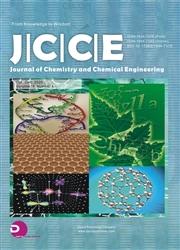The Reference Value for Biomonitoring in Chemicals Risk Area in Thailand
引用次数: 0
Abstract
The workers’ biological standard value (WBSV) is generally used to assess chemicals health risks in community. It may cause the deviate biomonitoring. Therefore, this study was aimed to set the pilot reference value for exposed people to chemicals. The study was divided into three phases: the two phases for field-study method and one phase for stakeholder’s adoption. Phase I was proceeded in one industrial zone in Thailand during the years 2012-2014 to collect blood and urine samples of 402 working-age people in community accompanied with in-depth interview. The 4 heavy metals (arsenic, cadmium, lead, mercury) in blood and urine were analyzed by atomic absorption spectroscopy (AAS) analysis and inductively coupled plasma mass spectrometry (ICP-MS). The metabolites of 4 volatile organic compounds (VOCs, benzene, toluene, styrene, xylenes) in urine were analyzed by high performance liquid chromatography (HPLC) analysis. The 8 chemicals concentrations of the volunteers’ average chemicals concentration (VACC) were calculated. Phase II was proceeded during the years 2015-2016 to compare risk group identification between usage of VACC and usage of WBSV. The results were presented in mean value, standard deviation, percentage, and significant. The results showed approximately 90 percent of VACCs were lower than WBSV. The exceptional result was volunteers’ average urinary arsenic concentration. It was clearly higher than WBSV. The comparative results showed the adjusted amount of risk people by VACC was higher than the adjusted amount risk people by WBSV. Phase III was proceeded in the year 2017 for stakeholder’s adoption. This study indicated that general people’s average chemicals concentration should be used as the reference value for biomonitoring and active health surveillance.泰国化学品危险区生物监测的参考价值
工人生物标准值(WBSV)通常用于评估社区中的化学品健康风险。这可能会导致生物监测的偏差。因此,本研究旨在为接触化学品的人设定试点参考值。该研究分为三个阶段:实地研究方法的两个阶段和利益相关者采用的一个阶段。2012-2014年,第一阶段在泰国的一个工业区进行,收集了社区402名工作年龄人群的血液和尿液样本,并进行了深入采访。采用原子吸收光谱法(AAS)和电感耦合等离子体质谱法(ICP-MS)对血液和尿液中的4种重金属(砷、镉、铅、汞)进行了分析。采用高效液相色谱法对尿液中4种挥发性有机物(VOC、苯、甲苯、苯乙烯、二甲苯)的代谢产物进行了分析。计算志愿者平均化学物质浓度(VACC)的8种化学物质浓度。第二阶段在2015-2016年进行,以比较VACC的使用和WBSV的使用之间的风险组识别。结果以平均值、标准差、百分比和显著性表示。结果显示,大约90%的VACC低于WBSV。异常结果是志愿者的平均尿砷浓度。明显高于WBSV。比较结果显示,VACC调整的风险人群数量高于WBSV调整的风险人数。第三阶段于2017年进行,供利益相关者采用。本研究表明,一般人的平均化学物质浓度应作为生物监测和主动健康监测的参考值。
本文章由计算机程序翻译,如有差异,请以英文原文为准。
求助全文
约1分钟内获得全文
求助全文

 求助内容:
求助内容: 应助结果提醒方式:
应助结果提醒方式:


